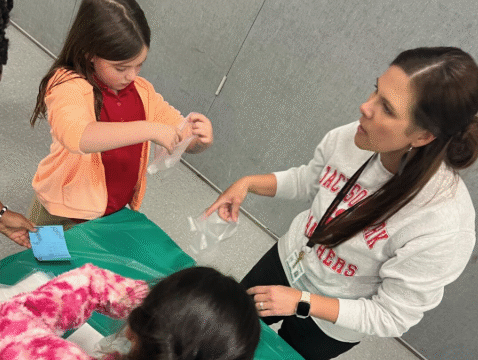Curiosity is a powerful catalyst for growth, innovation, and engagement. In educational leadership, leading with curiosity means fostering an environment where questions are welcomed, exploration is encouraged, and learning is a shared journey. School leaders who model curiosity inspire students, educators, and communities to embrace continuous improvement and creative problem-solving.
Embrace a Growth Mindset
Curious leaders view challenges as opportunities to learn. By embracing a growth mindset, they model the belief that abilities can develop through effort and inquiry. This mindset supports resilience and encourages staff and students to pursue excellence without fear of failure.
Ask Thoughtful Questions
Strong leaders don’t just provide answers—they ask the right questions. Whether in staff meetings, classroom visits, or community conversations, asking open-ended, reflective questions invites dialogue and innovation. This practice empowers others to think critically and contribute meaningfully.
Create a Culture of Exploration
Curiosity flourishes in an environment that values experimentation and discovery. Encouraging pilot programs, project-based learning, and teacher-led initiatives fosters creativity. When educators feel safe to try new methods and reflect on results, the entire school benefits from dynamic and responsive instruction.
Model Lifelong Learning
Leaders who pursue their own learning—through reading, attending workshops, or collaborating with peers—demonstrate that curiosity doesn’t end with formal education. Sharing personal learning experiences shows humility and a commitment to personal and professional growth.
Encourage Student Curiosity
Student voice and curiosity should be central to the school experience. School leaders can support inquiry-based learning, student-led projects, and interest-driven clubs that allow learners to follow their passions. Valuing student questions helps build confidence and deepens engagement.
Foster Collaboration and Diverse Perspectives
Curious leaders seek out multiple viewpoints and encourage collaborative thinking. Creating teams with diverse experiences and facilitating open discussion leads to richer insights and more innovative solutions. This inclusive approach strengthens decision-making and community trust.
Use Curiosity to Navigate Change
In times of transition, curiosity can be a guide. Instead of reacting with resistance, curious leaders ask: “What can we learn from this change?” This perspective promotes flexibility, reduces fear, and positions the school to adapt successfully.
Recognize and Celebrate Inquiry
Acknowledging curiosity in action—whether through a teacher trying a new strategy or a student pursuing a unique interest—reinforces its value. Publicly celebrating innovation and reflective thinking cultivates a vibrant, inquisitive culture.
Conclusion
Leading with curiosity transforms educational settings into places of possibility and progress. By modeling inquisitive thinking, encouraging exploration, and embracing continuous learning, school leaders nurture a culture where everyone—students, staff, and families—feels inspired to grow. Curiosity is not just a personal trait; it is a leadership strategy that empowers communities and shapes the future of education.





